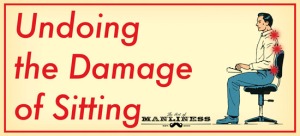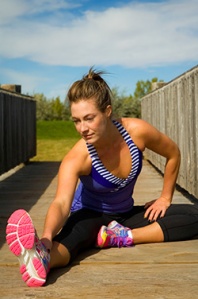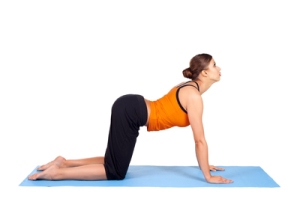Treating folks, like you, who move for a living and love to move

Blogs

Author: Richard Symister
The New 'Text Neck' EpidemicTechnology is a great thing, but not when it’s at the expense of your spinal health and wellness. Our postures are changing — de-evolving, if you will — adjusting to suit our smartphones, tablets and laptops. As we literally bow down to the forces of gravity, our spines go through negative adaptive changes, curving forward and becoming more susceptible to injury. The new epidemic? Text Neck — neck pain, stiffness and headaches directly associated with the repetitive or long-term use of hand-held devices.

But it’s not just the neck that suffers. A heavy, sagging head can lead to a dowager’s hump, carpel tunnel syndrome, lower bag pain, sciatica and “gamer’s thumb”.
THE PROBLEM: The Big Slump
The usual suspect is our poor posture. The inability to maintain our heads in proper, balanced alignment while texting, typing or reading overstretches and strains the posterior neck muscles, while compressing the anterior ones. This can lead to headaches, neck aches, scapula pain, radiating arm symptoms and hand numbness and tingling.

In New York, this spinal overload is re-enforced by sitting on hard, curved bus and subway seats, “strap hanging”, shoulder-hauling cumbersome bags and collapsing our bodies over small device screens. (Next time you are riding the MTA, take a look at your fellow commuters’ postures!)
THE SOLUTION: Readjusting Both Your Posture and Postural Program

Dealing with text neck takes a multifaceted approach, correctable with the practice of spine-healthy habits. If you’re stretching, rolling out and exercising for increased spinal stability and mobility, you’re on the right track. Now let’s turn your good spinal program into great one for improved efficiency and longer-lasting results.
- Rock and roll
Good: Foam rolling your spine vertically to assist in spinal mobility and releasing tight tissue.
Great: Foam rolling in different directions and angles. Why? One goal of foam rolling is to increase tissue extensibility— how far your skin, fascia and muscle can stretch and move in any direction — not just one direction.

- Get on the Ball
Good: Using a hand or lacrosse ball to apply pressure to tight, restrictive muscles or trigger points.

Great: Instead of just rolling, apply ball pressure while moving the restricted muscle through its sticking point. Why? Pressure assists with releasing tight tissue. Moving the tissue “resets” the brain and muscle so they remember the new range of motion.
- Ask for a Hand
Good: Get massaged to loosen tight muscles and increase blood flow.
Great: Find clinician, like a Physical Therapist with a good “tool box” of manual and corrective techniques. Why? As you progress through the different stages of your spinal evolution process, the experienced Physical Therapist will know when and where to apply treatments specific to your tolerance, needs and goals.

- Use It or Lose It
Good: General stretching

Great: Contract/Relax Stretching — stretching a muscle on one side of the limb or body, and then contracting the muscle on the opposite side. An example would be first stretching the hamstrings (posterior thigh) and then contracting the quadriceps (anterior thigh). Why? Following up with a muscle contraction on the opposite side “shuts off” the muscle being stretched, allowing a further, longer-lasting stretch.
- Get to the C.O.R.E of Problem
Good: Isolated neck exercises
Great: Breaking down your core program into a C.O.R.E. program:

- Coordinated breathing. Why? A slumped posture means a compressed diaphragm. Corrective breathing exercises are crucial for proper transport of oxygen to working muscles and brain for clarity, concentration and a deterrent to some forms of headaches.
- Organized muscle activity. Why? The research is out there. With pain, dysfunctions occur such as muscle “amnesia”, altered biomechanics, limited range of motion, compensatory patterns and muscle imbalances. Your muscles needs some re-education to work in a coordinated, synergistic fashion!
- Repetition: Why? Big changes won’t happen overnight. It may take some time to reset your brain to your new postural positions. You’ll need to practice, practice, practice in all sorts scenarios, situations and environments for these changes to become habits.
- Endurance: Why? Counting reps and sets does little for real life carryover. Neck muscles kick on as soon as you raise your head off of the pillow and stay on (until supported). Training them to tolerate long laptop or smartphone use is just as important as sports-specific training for any athlete.

Beat the epidemic of Text Neck and other postural-related pathology. Create a new or tweak your current postural program for decreased pain, improved breathing and a stronger spine to kick start your spinal evolution!
Suffering from Text Neck? CONTACT US for an evaluation and treatment!
move. heal. evolve.
———–
More text neck related links:
- Washington Post: Text Neck
- Why sitting is bad for you
- Resetting your posture at your work station
- Veridesk: Make your work station work for you!
- A simple 10 minute Yoga routine for improved posture and spinal mobility
Waiver:
MovEvolution Inc. will not be responsible or liable for any injury sustained while exercising at your home, gym or elsewhere. This blog’s information is not intended to be a substitute for professional medical advice. Consult a doctor before starting any exercise program.

